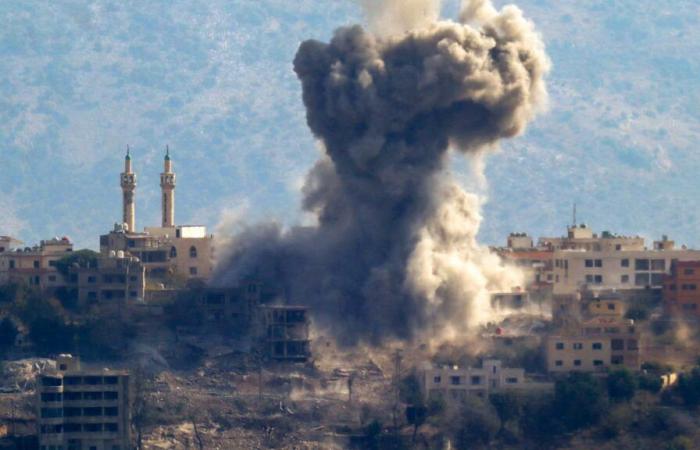– / AFP
Illustrative photo of the consequences of an Israeli airstrike on the village of Khiam, southern Lebanon, November 9, 2024.
INTERNATIONAL – While the head of diplomacy of the European Union Josep Borrell estimated this Sunday, November 24 that two months after his last visit to Lebanon, the country “ is on the verge of collapse », Violent fighting continues between Lebanese Hezbollah and the Israeli army.
After deadly Israeli strikes on Lebanon on Saturday, which left at least 30 dead in the south and east of the country, Israel said that Hezbollah in Lebanon had fired more than a hundred projectiles towards its territory, while intercepting a game.
Until early afternoon this Sunday, 160 projectiles were fired “by the terrorist organization Hezbollah” to Israel, she said. According to Magen David Adom, the Israeli equivalent of the Red Cross, and certain hospitals, several people were injured, including a sixty-year-old who was seriously injured. Warning sirens also sounded in the north and center of the country.
For its part, the Lebanese Hezbollah, which evokes a “ complex operation », declared having launched a “salvo of missiles and a swarm of explosive drones” on an Israeli army intelligence base on the outskirts of Tel Aviv, the second such attack in the area on Sunday. More precisely, it is a “a salvo of missiles” on « the Glilot base »the headquarters of Military Intelligence Unit 8,200, declared the pro-Iranian group in open war against Israel.
The Lebanese capital still affected
In a separate press release, it is specified that “explosive drones” were also launched towards a naval base in Ashdod, in what appears to be a rare attack on southern Israel since the start of the conflict on September 23.
In retaliation, “Israeli warplanes launched two violent strikes on the southern suburbs of Beirut, in the Kafaat sector” this Sunday, according to Lebanese state media. While shortly before, a call from the Israeli army invited the evacuation of certain areas of this Hezbollah stronghold.
Images broadcast by AFPTV show smoke rising above the Lebanese capital after these new strikes.
In another attack on Lebanese territory carried out by the Jewish state, a Lebanese soldier was killed and 18 others injured, some seriously, in a position in southern Lebanon, the Lebanese army announced in a statement. “The attack by the Israeli enemy targeted an army center in the town of al-Amiriyeh, which suffered significant damage”according to this text.
Also see on HuffPost:
Reading this content may result in cookies being placed by the third party operator who hosts it. Taking into account the choices you have expressed regarding the deposit of cookies, we have blocked the display of this content. If you wish to access it, you must accept the “Third Party Content” category of cookies by clicking on the button below.
Play Video






